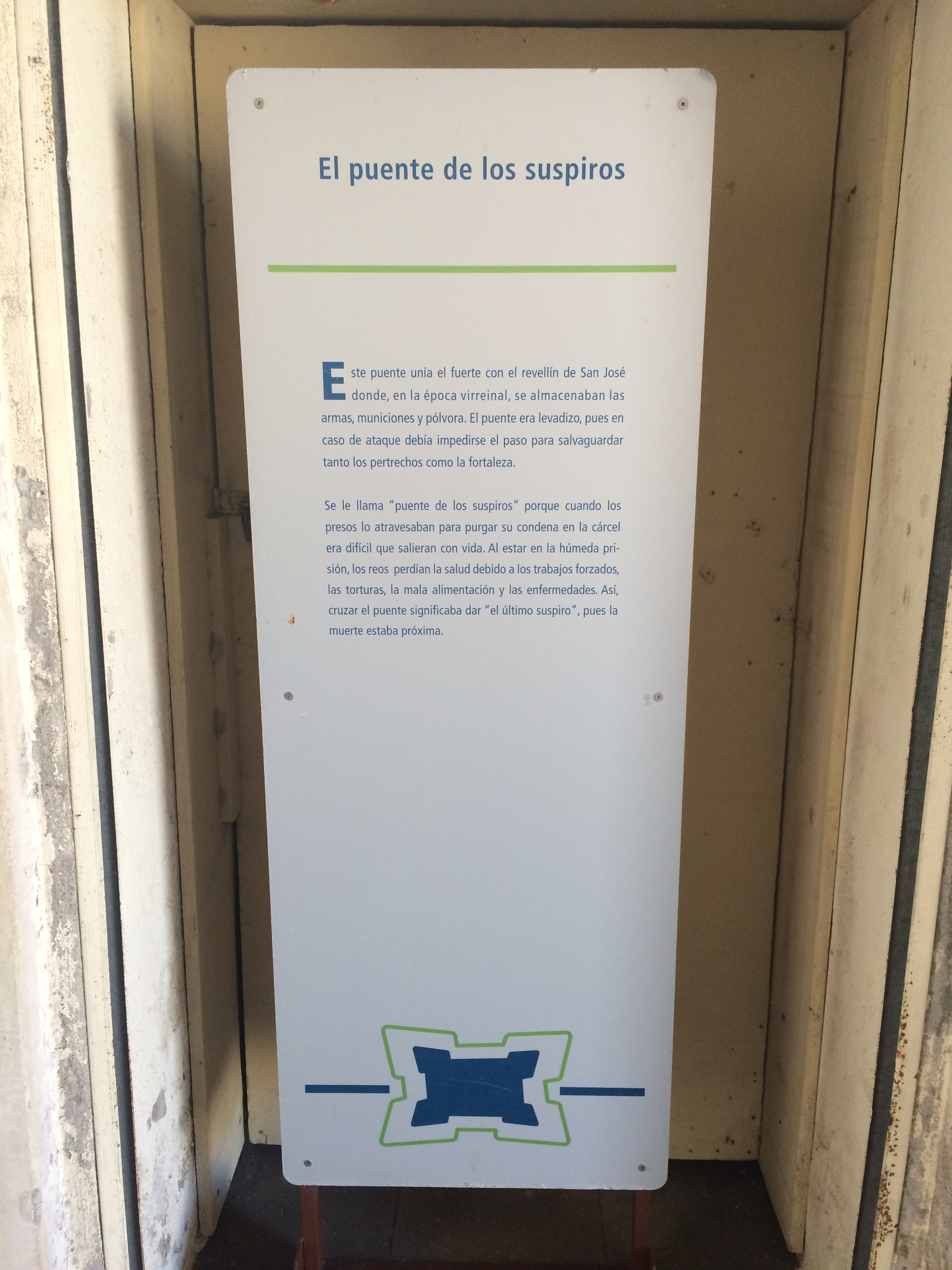Photograph as originally submitted to
this page in the Historical Marker Database
www.HMdb.org.
Click on photo to resize in browser. Scroll down to see metadata.
Photographer: J. Makali Bruton
Taken: March 23, 2017
Caption:
An additional nearby marker on the "Bridge of Sighs" | Additional Description:
El puente de los suspirosEste puente unía el fuerte con el revellín de San José donde, en la época virreinal, se almacenaban las armas, municiones y pólvora. El puente era levadizo, pues en caso de ataque debía impedirse el paso para salvaguardar tanto los pertrechos como la fortaleza.
Se le llama "puente de los suspiros" porque cuando los presos lo atravesaban para purgar su condena en la cárcel era difícil que salieran con vida. Al estar en la húmeda prisión, los reos perdían la salud debido a los trabajos forzados, las torturas, la mala alimentación y las enfermedades. Así, cruzar el puente significaba dar “el último suspiro", pues la muerte estaba próxima.
English translation:The Bridge of Sighs
This bridge united the fort with the Ravelin of San José where, in the viceroyal era, arms, ammunition and gunpowder were stored. The bridge could be raised and lowered, as in case of attack it was necessary to block the passage and safeguard both the supplies and the fortress.
It is called the "Bridge of Sighs" because when the ravelin was later used as a prison, crossing this bridge to begin a prison sentence most likely meant that one would not make it out alive. While in the damp prison, prisoners lost their health due to forced labor, torture, poor diet and disease. Thus crossing the bridge meant that one was soon to give their "last breath," for death was near.
Submitted: June 10, 2017, by J. Makali Bruton of Accra, Ghana.
Database Locator Identification Number: p385238
File Size: 1.471 Megabytes
To see the metadata that may be embedded in this photo, sign in and then return to this page.
